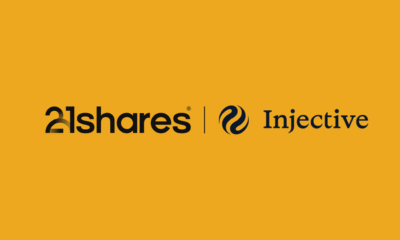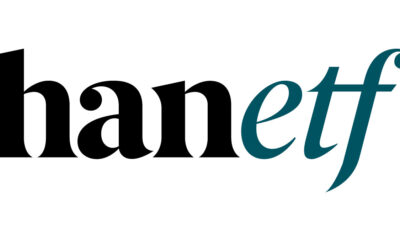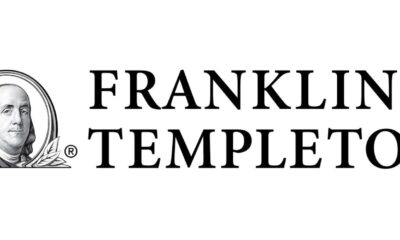There is once again growing interest in the world of the metaverse as technological advancements and innovative strategies in different sectors have continued to show progress. Dina Ting, Franklin Templeton’s Head of Global Index Portfolio Management, explores this new digital landscape and the opportunities it presents. She also discusses practical applications, including immersive entertainment and luxury brand experiences.
Ever since ChatGPT and all things artificial intelligence (AI) began dominating headlines, the term “metaverse” seems to have slipped out of the spotlight. But the recent debut of the stunning US$2.3 billion Sphere venue in Las Vegas, christened by U2’s latest live concert series, seems an appropriate reminder of the ongoing evolution of immersive ecosystems (as well as the allure of FOMO—“fear of missing out”—on new trends).
The eye-popping arena—tall enough to fit the entirety of the Statue of Liberty inside it—boasts a communal virtual reality (VR) experience without the need for goggles. The giant orb’s exterior features the world’s largest (58,000 square feet) fully programmable LED screen and an interior space that U2’s guitarist, the Edge, has described as a “quantum leap forward” in revolutionizing live entertainment.
Equipped with haptic seats that vibrate to match not only scenes being displayed but also next-level audio, the venue engages all senses with wind, temperature and even scent effects that can leave guests feeling as though they are outdoors or even in outer space.
The Sphere’s enormous scale might be particularly Vegas-esque, but it’s the latest harbinger of our new immersive entertainment era. Investors eyeing the still-early stages of metaverse development find appeal in the array of pioneering content formats and related technology to solve for constraints such as that of conventional imaging and filmmaking for spaces with vast ultra-high-resolution displays. Creators of the Sphere are even collaborating with the US National Aeronautics and Space Administration (NASA) on media innovation.
Global adoption of 3D holographic imaging and LED displays is surging as companies continue to develop new ways to blur the line between virtual and physical. The global LED display market, worth at US$15 billion in 2022, is estimated to grow to US$23 billion by 2030.1
During this year’s Meta Connect conference, CEO Mark Zuckerberg unveiled new AI tools—such as Max the sous chef—and reiterated to attendees that “soon the physical and digital will come together in what we call the metaverse.”
Luxury brands, including Chanel and Dolce & Gabbana, have also been keen to invest in immersive metaverse strategies. Some involve new modes of personalized services, brand interaction and experiences to enhance loyalty for customers or seamless and creative collaboration for employees as well as leveraging virtual worlds to improve corporate operational efficiencies.
Since Louis Vuitton first partnered with Riot Games four years ago to create skins for avatars, a number of high-profile design events have launched, such as Metaverse Fashion Week. Last fall, Italian fashion house Gucci appointed a head of metaverse role, and around the same time, luxury watchmaker Rolex made moves into the metaverse, filing trademark applications in the realms of cryptocurrency and the non-fungible tokens market.
No doubt there are many initiatives that will struggle in this emerging space, which is why investors may prefer to use rules-based ETF strategies to capture the optimal metaverse exposure. Tracking such indexes can offer an advantage in that they automatically adjust portfolios to include select companies on the forefront of this new digital landscape. We continue to believe opportunities to revolutionize our digital interactions across sectors and industries are immense, and the solutions these new technologies will offer will drive demand.
Any companies and/or case studies referenced herein are used solely for illustrative purposes; any investment may or may not be currently held by any portfolio advised by Franklin Templeton. The information provided is not a recommendation or individual investment advice for any particular security, strategy, or investment product and is not an indication of the trading intent of any Franklin Templeton managed portfolio.
- Source: Zion Market Research, May 2023. There is no assurance that any estimate, forecast or projection will be realized.
WHAT ARE THE RISKS?
All investments involve risks, including possible loss of principal.
Investments in fast-growing industries like the technology sector (which historically has been volatile) could result in increased price fluctuation, especially over the short term, due to the rapid pace of product change and development and changes in government regulation of companies emphasizing scientific or technological advancement or regulatory approval for new drugs and medical instruments.
Buying and using blockchain-enabled digital currency carries risks, including the loss of principal. Speculative trading in bitcoins and other forms of cryptocurrencies, many of which have exhibited extreme price volatility, carries significant risk. Among other risks, interactions with companies claiming to offer cryptocurrency payment platforms or other cryptocurrency-related products and services may expose users to fraud. Blockchain technology is a new and relatively untested technology and may never be implemented to a scale that provides identifiable benefits.
For actively managed ETFs, there is no guarantee that the manager’s investment decisions will produce the desired results.
ETFs trade like stocks, fluctuate in market value and may trade above or below the ETF’s net asset value. Brokerage commissions and ETF expenses will reduce returns. ETF shares may be bought or sold throughout the day at their market price on the exchange on which they are listed. However, there can be no guarantee that an active trading market for ETF shares will be developed or maintained or that their listing will continue or remain unchanged. While the shares of ETFs are tradable on secondary markets, they may not readily trade in all market conditions and may trade at significant discounts in periods of market stress.
IMPORTANT LEGAL INFORMATION
This material is intended to be of general interest only and should not be construed as individual investment advice or a recommendation or solicitation to buy, sell or hold any security or to adopt any investment strategy. It does not constitute legal or tax advice. This material may not be reproduced, distributed or published without prior written permission from Franklin Templeton.
The views expressed are those of the investment manager and the comments, opinions and analyses are rendered as at publication date and may change without notice. The underlying assumptions and these views are subject to change based on market and other conditions and may differ from other portfolio managers or of the firm as a whole. The information provided in this material is not intended as a complete analysis of every material fact regarding any country, region or market. There is no assurance that any prediction, projection or forecast on the economy, stock market, bond market or the economic trends of the markets will be realized. The value of investments and the income from them can go down as well as up and you may not get back the full amount that you invested. Past performance is not necessarily indicative nor a guarantee of future performance. All investments involve risks, including possible loss of principal.
Any research and analysis contained in this material has been procured by Franklin Templeton for its own purposes and may be acted upon in that connection and, as such, is provided to you incidentally. Data from third party sources may have been used in the preparation of this material and Franklin Templeton (“FT”) has not independently verified, validated or audited such data. Although information has been obtained from sources that Franklin Templeton believes to be reliable, no guarantee can be given as to its accuracy and such information may be incomplete or condensed and may be subject to change at any time without notice. The mention of any individual securities should neither constitute nor be construed as a recommendation to purchase, hold or sell any securities, and the information provided regarding such individual securities (if any) is not a sufficient basis upon which to make an investment decision. FT accepts no liability whatsoever for any loss arising from use of this information and reliance upon the comments, opinions and analyses in the material is at the sole discretion of the user.
Products, services and information may not be available in all jurisdictions and are offered outside the U.S. by other FT affiliates and/or their distributors as local laws and regulation permits. Please consult your own financial professional or Franklin Templeton institutional contact for further information on availability of products and services in your jurisdiction.

 Nyheter3 veckor sedan
Nyheter3 veckor sedan
 Nyheter3 veckor sedan
Nyheter3 veckor sedan
 Nyheter3 veckor sedan
Nyheter3 veckor sedan
 Nyheter2 veckor sedan
Nyheter2 veckor sedan
 Nyheter2 veckor sedan
Nyheter2 veckor sedan
 Nyheter2 veckor sedan
Nyheter2 veckor sedan
 Nyheter2 veckor sedan
Nyheter2 veckor sedan
 Nyheter2 veckor sedan
Nyheter2 veckor sedan






















